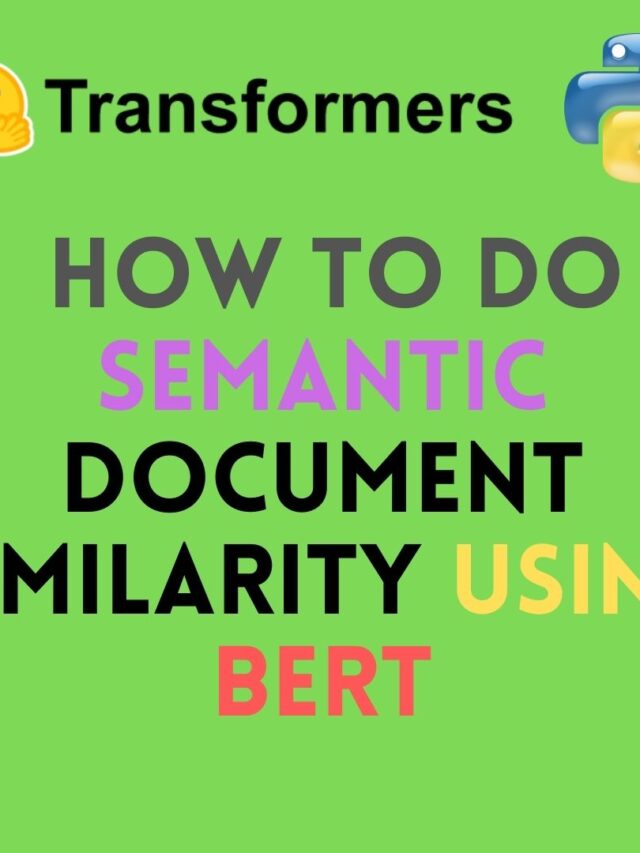Now you can do zero-shot classification using the Huggingface transformers pipeline.
The “zero-shot-classification” pipeline takes two parameters sequence and candidate_labels.
How does the zero-shot classification method works?
- The NLP model is trained on the task called Natural Language Inference(NLI).
- NLI takes in two sequences and determines whether they contradict each other, entail each other, or neither.
- The same NLI concept applied to zero-shot classification.
- It treats the sequence we want to classify as one NLI sequence(The premise) and turns candidate labels into the hypothesis.
- If the model predicts that the constructed premise entails the hypothesis, then we can take that as a prediction that the label applies to the text.
Let’s see the pipeline in action
Install transformers in colab,
!pip install transformers==3.1.0
Import the transformers pipeline,
from transformers import pipeline
Set the zer-shot-classfication pipeline,
classifier = pipeline("zero-shot-classification")
If you want to use GPU,
classifier = pipeline("zero-shot-classification", device=0)
Now pass the sequence and a list of candidate labels,
sequence = "For any budding cricketer, playing with or against MS Dhoni is a big deal" candidate_labels = ["cricket", "football", "basketball"] classifier(sequence, candidate_labels)
Output:
{'labels': ['cricket', 'football', 'basketball'],
'scores': [0.9888357520103455, 0.00587576674297452, 0.005288500338792801],
'sequence': 'For any budding cricketer, playing with or against MS Dhoni is a big deal'}
Well, it correctly predict the correct sport type.
Now lets try for the same sequence but candidates labels will be premier leagues.
sequence = "For any budding cricketer, playing with or against MS Dhoni is a big deal" candidate_labels = ["Indian Premier league", "English Premier League", "Super Bowl"] classifier(sequence, candidate_labels)
output:
{'labels': ['Indian Premier league', 'Super Bowl', 'English Premier League'],
'scores': [0.48798325657844543, 0.27571797370910645, 0.2362987995147705],
'sequence': 'For any budding cricketer, playing with or against MS Dhoni is a big deal'}
WOW! it also correctly predicts the premier league type.
Multi-class classification
For multi-class classification, do multi_class=True.
Here, each score is independent and lies between 0 and 1.
sequence = "For any budding cricketer, playing with or against MS Dhoni is a big deal" candidate_labels = ["cricket", "football", "basketball"] classifier(sequence, candidate_labels, multi_class=True)
output:
{'labels': ['cricket', 'football', 'basketball'],
'scores': [0.9787819981575012,
0.00012889981735497713,
0.00010893704165937379],
'sequence': 'For any budding cricketer, playing with or against MS Dhoni is a big deal'}
Sentiment classification:
Lets see a sentiment classification example,
sequence = "IPL 2020: MS Dhoni loses cool again, confronts umpires in clash against Rajasthan Royals" candidate_labels = ["positive", "negative"] classifier(sequence, candidate_labels)
{'labels': ['negative', 'positive'],
'scores': [0.9861539006233215, 0.01384611614048481],
'sequence': 'IPL 2020: MS Dhoni loses cool again, confronts umpires in clash against Rajasthan Royals'}
Let’s see when this pipeline fails:
It fails to distinguish properly ‘positive’ and ‘negative’ sentiment in this example,
sequence = "Tech Companies in India are having problem raising funds. Nevertheless, they are doing great with customer acquisition" candidate_labels = ["positive", "negative"] classifier(sequence, candidate_labels)
The probabilities around 0.5, so the model doesn’t correctly distinguish between ‘positive’ and ‘negative’ sentiment.
{'labels': ['negative', 'positive'],
'scores': [0.5629852414131165, 0.4370148181915283],
'sequence': 'Tech Companies in Nepal are having problem to raise funds.Nevertheless, they are doing great with customer acquisition'}
Let’s improve the results by using a hypothesis template that is more specific to the setting of review sentiment analysis.
sequence = "Tech Companies in India are having problem raising funds. Nevertheless, they are doing great with customer acquisition"
candidate_labels = ["positive", "negative"]
hypothesis_template = "The sentiment of this review is {}."
classifier(sequence, candidate_labels, hypothesis_template=hypothesis_template)
output: Now it gives proper results,
{'labels': ['positive', 'negative'],
'scores': [0.7728187441825867, 0.22718125581741333],
'sequence': 'Tech Companies in India are having problem to raise funds.Nevertheless, they are doing great with customer acquisition'}
References:-
https://discuss.huggingface.co/t/new-pipeline-for-zero-shot-text-classification/681
Let me know in comments section, if you are facing any issues.
You can follow me on Twitter and Instagram to get notified of new posts.
Happy learning 🙂
Some of my other blogs,
https://theaidigest.in/summarize-text-document-using-transformers-and-bert/
https://theaidigest.in/extract-data-from-elasticsearch-using-python/
https://theaidigest.in/what-is-elasticsearch/
https://theaidigest.in/how-does-elasticsearch-scoring-work/
https://theaidigest.in/load-csv-into-elasticsearch-using-python/
https://theaidigest.in/extract-data-from-elasticsearch-using-kibana-dev-tools/



2 replies on “Zero-shot classification using Huggingface transformers”
[…] https://theaidigest.in/zero-shot-classification-using-huggingface-transformers-pipeline/ […]
[…] Zero-shot classification using Huggingface transformers […]